| March 06, 2012 | Volume 08 Issue 09 |
|
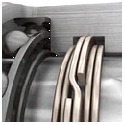 | Seal It, Protect It!
A Smalley Laminar Seal Retaining Ring is a metallic labyrinth seal consisting of multiple rings in a groove. To seal an assembly from contamination while withstanding high temperatures and corrosive environments, laminar rings are produced from metal – not rubber, neoprene, or other non-metallic materials. The arrangement of the rings and the specific orientation of the rings are dictated by the application and the severity of the environment. Numerous configurations are available; standard sizes from 5/8" to 50".
Click here for more info. |
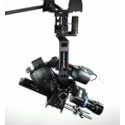 | Hollywood Loves a Good Cheap Shot
Reliable, consistent motors and careful engineering yield high-performance camera positioning systems at an affordable price.
Location, location, location. It's not just a real estate mantra. Camera position can make or break a shot. Feature filmmakers have the luxury of working with dollies and grips and expensive automated technologies to guarantee accuracy and repeatability of camera angles. Videographers aren't so lucky. They have only a fraction of a feature's filmmaker's budget.
Click here for an exciting motion-control application story. |
| | Feature articles | Precision metal bellows used as spring replacements in mechanical and electrical applications
Servometer metal bellows are used for metallic hermetic seals, volume compensators, pressure and temperature sensors, flexible connectors, and countless other applications where quality, dependability, and long life are critical requirements. In this article, we evaluate the use of an electrodeposited metal bellows as a replacement for a metal spring in mechanical and electrical systems. The bellows offers various benefits to create a cost-effective, repeatable solution.
Read the full article. |
|
|
|
Penn researchers build first physical metatronic circuit
The technological world of the 21st century owes a tremendous amount to advances in electrical engineering, specifically, the ability to finely control the flow of electrical charges using increasingly small and complicated circuits. And while those electrical advances continue to race ahead, researchers at the University of Pennsylvania are pushing circuitry forward in a different way, by replacing electricity with light.
Read the full article. |
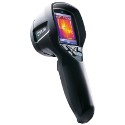 | Mike Likes:
FLIR launches enhanced i-Series infrared cameras
The next-generation i-Series point-and-shoot infrared cameras are super-powerful infrared diagnostics tools starting at only $1,195. The FLIR i3, i5, and i7 offer better images, an optimized display for faster inspections, and a combination of thermal sensitivity and measurement accuracy typically only seen in cameras costing thousands more. These durable units are easy to use and perfect for those just starting out with infrared, or for outfitting the whole crew with thermal imaging.
Learn more about the FLIR i-Series. |
| | Most popular last issue | NASA News:
Rocket-powered landing demonstrator makes successful first flight
The first successful free flight of a new rocket-powered vertical landing demonstrator occurred recently at Mojave Air and Space Port, Mojave, CA. The test used a new flight control system concept that will enable future demonstrations of landing technologies needed for exploration of planets and moons, as well as near-Earth objects, like asteroids. NASA's Flight Opportunities Program sponsored the flight and control system test.
Read the full article. |
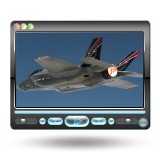 | Video: F-35 fighter testing: 2011 is 'year of firsts'
The F-35A flight test team at Edwards AFB, CA, recounts 2011, a productive year of test that they call "the year of the firsts." From flight envelope expansion to mission systems, and KC-10 fuel testing to sensor fusion, the team made great strides testing the F-35A fighter, a conventional takeoff and landing craft that is the smallest, lightest F-35 version and the only one in the series equipped with an internal cannon. The fighter's fraternal twin, the F-35B, is a short-takeoff and vertical-landing craft.
View the video. |
|
| | Videos+: Technologies and inspiration in action | NASA aims to harpoon comet to collect samples
Ever wonder how we might grab some comet core rocks and bring them back to Earth? Well the Comet Nucleus Sample Return mission will do just that by firing an explosive-powered, sample-collecting harpoon into a comet's heart and then bringing the debris back to the Big Blue Marble. How exactly will that play out? Watch and see. NASA engineers are testing the proof-of-concept, cross-bow launch system right now.
View the video. |
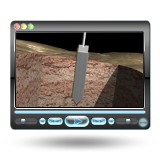 |
DARPA takes LS3 (BigDog) robot for a walk
DARPA is developing a semi-autonomous four-legged robot, the Legged Squad Support System (LS3) based on the BigDog system created by Boston Dynamics, to work in tandem with a squad of Marines or Soldiers. Recently, the LS3 prototype underwent its first outdoor exercise, demonstrating the ability to follow a person using its "eyes" – sensors that allow the robot to distinguish between trees, rocks, terrain obstacles, and people. Over the course of the next 18 months, DARPA plans to complete development of and refine key capabilities to ensure LS3 is able to support dismounted squads of warfighters. Features to be tested and validated include the ability to carry 400 lb on a 20-mile trek in 24 hr without being refueled. Also planned is the addition of "hearing" technology, enabling squad members to speak commands to LS3 such as "stop," "sit," or "come here." Hopefully it will be made quieter too.
View the video. |
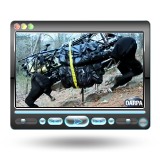 |
|
|